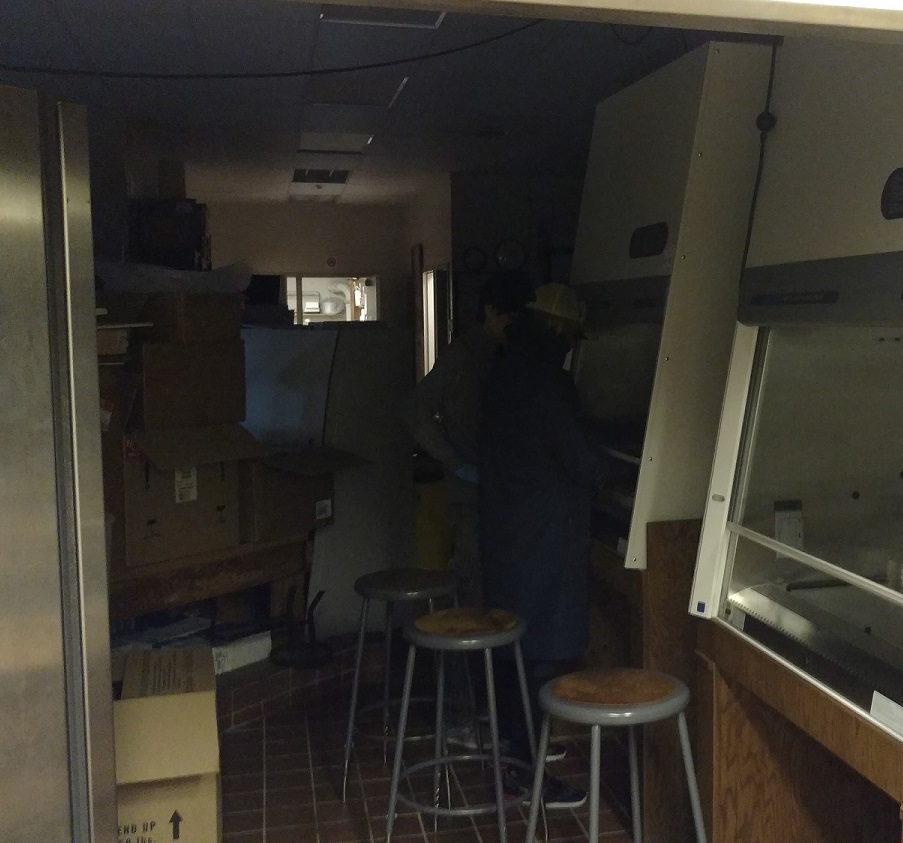Replace this with text and images describing the protocols used, and any other information (i.e. DNA quantification method we used).
Contents
Bacterial Transformation
Describe our transformation protocol, mention the fact that we occasionally performed it in the dark for light sensitive cells.
Molecular Biology
This will have a brief mention of the Gibson protocol (i.e. what brand / kit we used) and similar information for Restriction Digest, Ligation, and PCR (both preparatory and analytical aka colony PCR).
DNA Quantification
This has the information and reference on the dot blot sutff, in
Preparation of Media
LB Miller broth and plates were prepared by dissolving 12.5g of [http://www.labdepotinc.com/p-58630-lb-broth-miller-s.php LB power] alone (broth) or with 7.5g of [http://www.labdepotinc.com/p-58610-gc-agar.php Agar] base (plates) into 500mL of distilled H20. The mixture was then autoclave sterilized.
Concentrated 1000X stocks of antibiotics, such as Ampicillin (Am), Kanamycin (Kn), or Chloramphenicol (Cm) were used to supplement media appropriately, and were prepared as follows:
| Antibiotic | 1X Conc. | Grams | Solvent (10mL) |
|---|---|---|---|
| Am | 100ug/mL | 1.0g | dH20 |
| Kn | 50ug/mL | 0.5g | dH20 |
| Cm | 30ug/mL | 0.3g | 70% EtOH |
X-gal was prepared as a 1000X stock solution of 20mg/mL; 0.2g was added to 10mL of DMF, and stored protected from light at -20C.
IPTG was prepared as a 1000X stock solution of 1M; 2.38g was added to 10mL of distilled H20 (dH20), filter sterilized, and stored at 4C in the short-term or divided into aliquots and stored at -20C.
Since LB Miller normally contains 1% NaCl, higher salt plates were generated by adding either 10g of NaCl (for a total of 3% NaCl) or 20g of NaCl (for a total of 5% NaCl) to the 500mL LB-Agar mixture listed above.
Agarose Gel Electrophoresis
To separate out different sized DNA fragments, we prepared 1% agarose gels using the 0.5g EZ Agarose tablets dissolved in 50mL of 10mM NaBO4 buffer. The same buffer was used to run the gel once loaded with samples, typically at a range of 120 - 150 volts. After sufficient run time, the gel was removed, mixed with approximately 50mL of distilled water and 5uL of Ethidium Bromide (at a 10mg/mL stock concentration) for 10 minutes, and then destained with fresh distilled water for about 5 minutes before visualizing on a UV lamp.
RFP and LacZ-Alpha quantification
How the color of bacterial growth on a petri dish is quantified:
1. Open a file in ImageJ (example file to try is given below)
2. Using the circle/oval or rectangle selection tool, select a small area of bacterial growth that is more or less uniform in color. (i.e. don't select a region that contains both bacteria and empty / blank plate.)
3. Under the Analyze menu, select Histogram (or hit CTRL+H). You should see a graph with one peak - if there are multiple large peaks, go back to step 2 and try to get a more uniform selection.
4. The default measurement is grayscale. Record the average grayscale (the mean) value for that selection, then click on RGB to cycle to a value that represents the amount of red in the selection. Record this mean as well, and cycle through green and blue, recording each value for that selection.
5. Repeat the process above for all other bacteria growths on the plate, recording their values separately, and 1 extra set of measurements for a blank spot on the plate (a negative control). It may be easier to move to the next bacterial growth by selecting the "Live" option in the histogram window and drawing your selection shape to the part of the picture with the next bacterial growth.
6. Calculate the ratio between the red and green values (for RFP), or blue and red values (for LacZ-alpha) for any given bacterial growth, and subtract from it any background signal (i.e. the plate itself). This ratio approximates the amount of pigment produced in the bacteria.
Seawater Experiments
Details regarding collection of seawater, setup of the dilutions, etc



